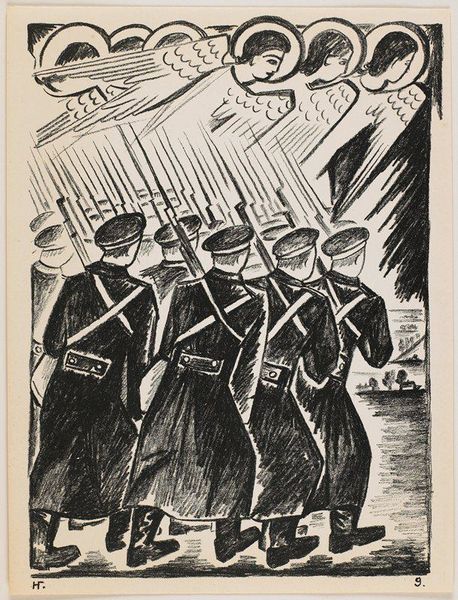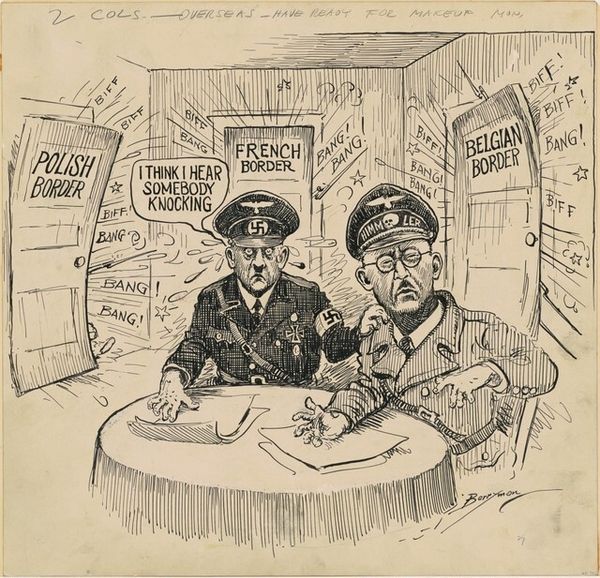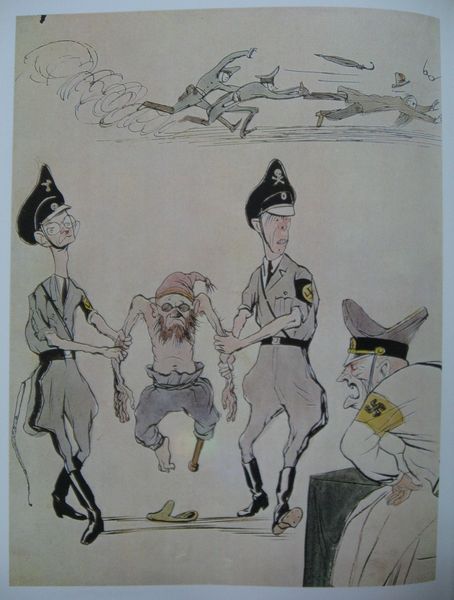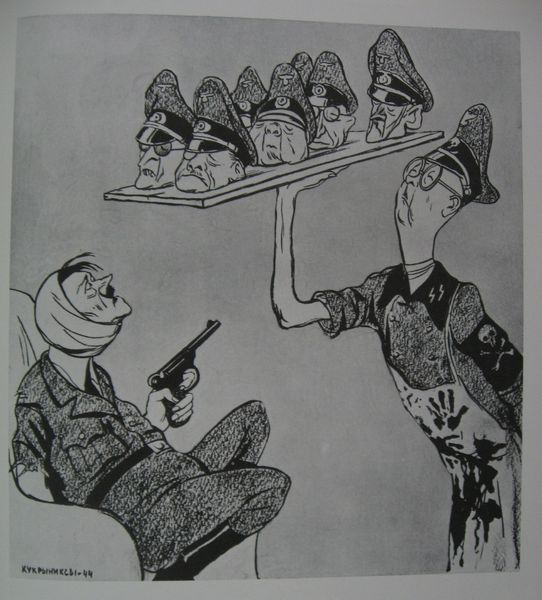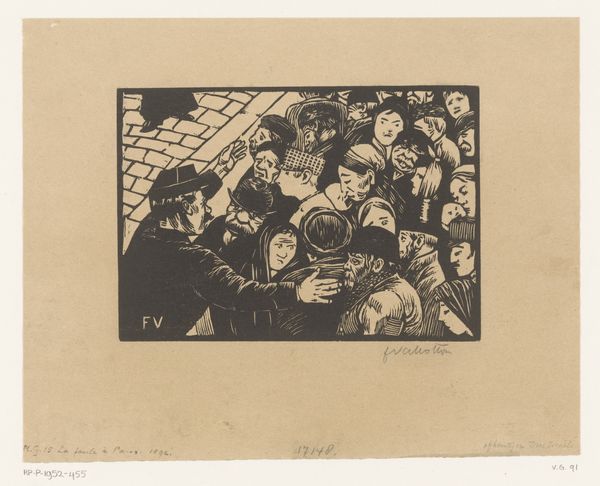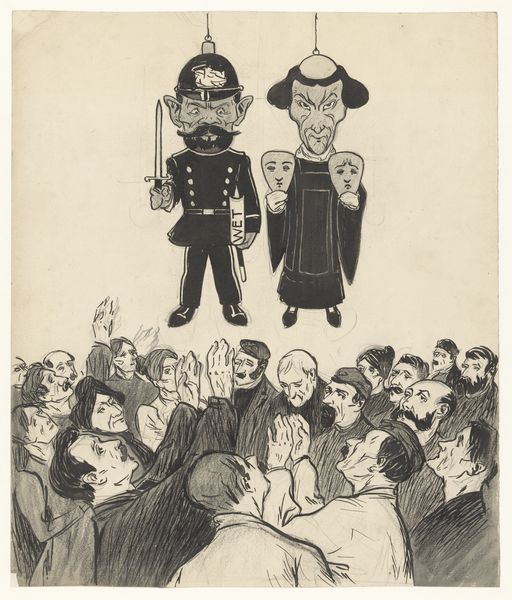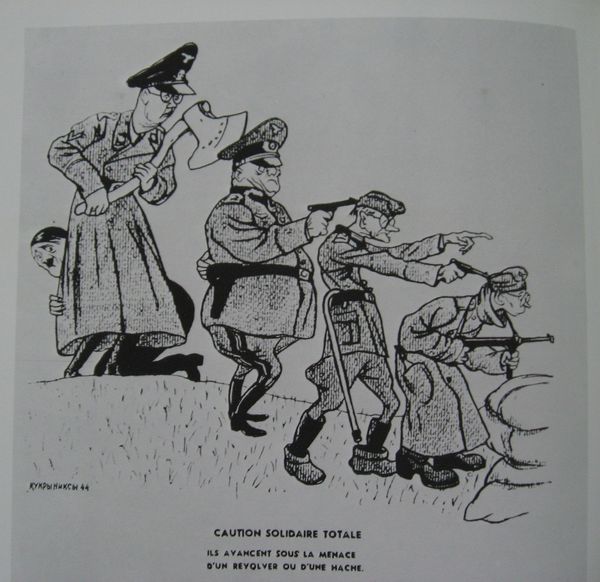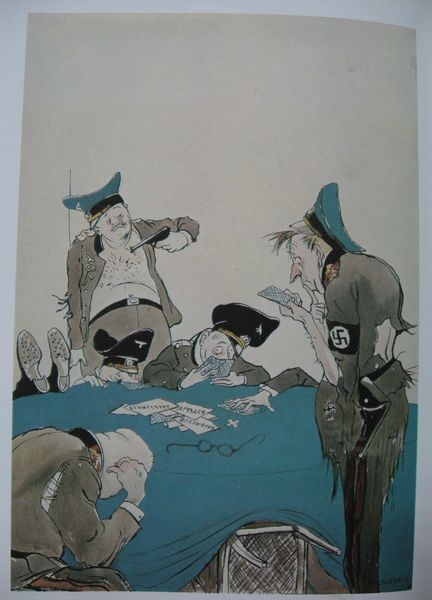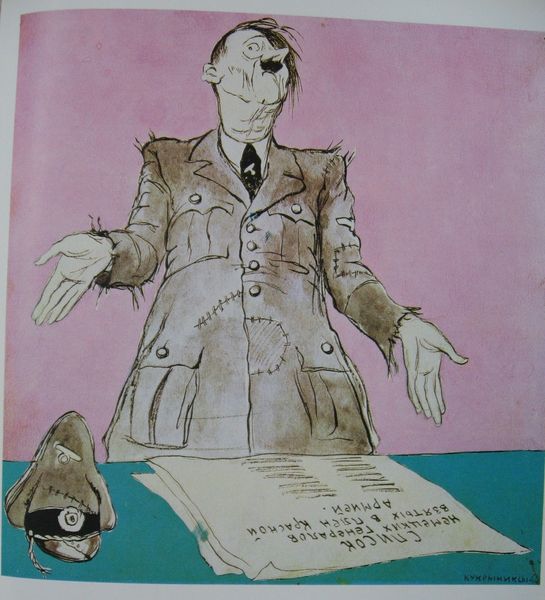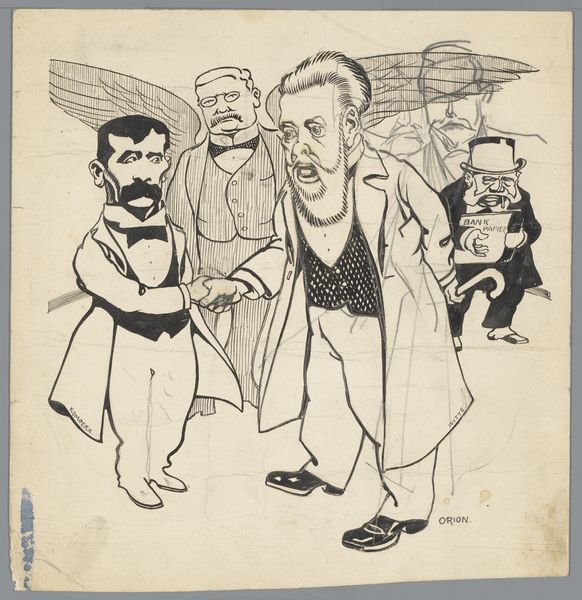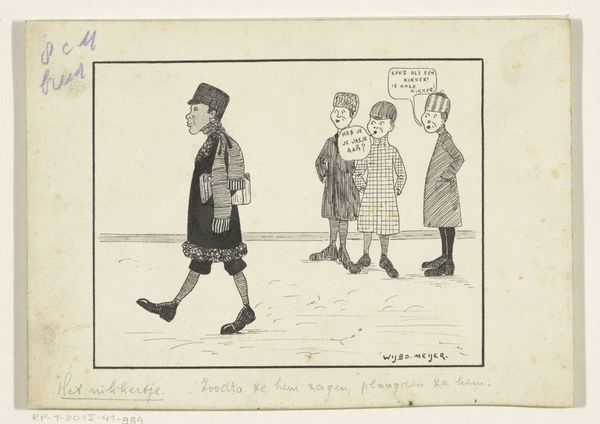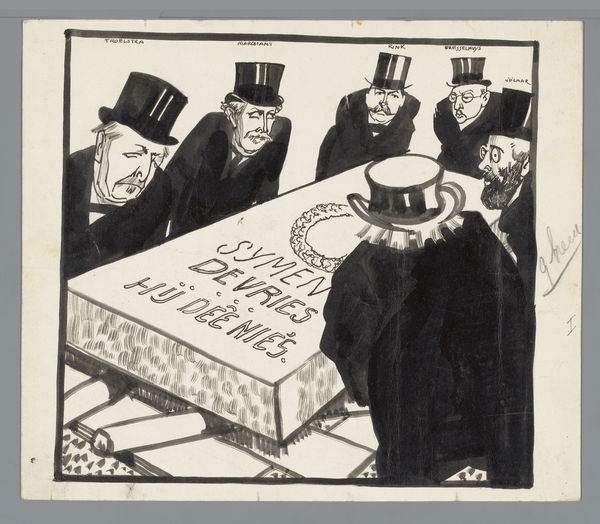
drawing, watercolor
#
drawing
#
caricature
#
watercolor
#
group-portraits
#
expressionism
#
watercolour illustration
Dimensions: height 159 mm, width 120 mm
Copyright: Rijks Museum: Open Domain
Editor: This watercolour illustration, “Treincontroleur,” made sometime between 1876 and 1924 by Gerrit Willem Dijsselhof, really strikes me as unsettling. There’s a palpable sense of…discomfort, maybe even dread, looking at those figures. What do you see in this piece? Curator: The repetition, the grotesque exaggerations…these are all familiar tactics used to dehumanize a group. Caricature is a powerful tool of propaganda, and this work certainly wields that power. What feelings does their collective act evoke? Is it unison, discord, celebration, or something more sinister? Editor: It definitely feels sinister. Their open mouths don't seem to be singing, more like screaming. There is also text which reads 'Where one sings, let yourselves nieder.'. Could it have something to do with the cultural context? Curator: The added note of 1941 and CV, points to the Netherlands during the Nazi occupation in WWII, so yes absolutely. Do you know what it means to you personally? Can you see it referring to historical facts? Editor: Now knowing that, it feels like a warning – that manufactured joy, that imposed unison, hides something truly malevolent. The text sounds harmless but can mean something completely different. It’s incredibly disturbing now knowing the context. Curator: Indeed. Visual symbols often act as shorthand for cultural memory, for shared understanding and misunderstanding, particularly in moments of collective trauma. And it is here. They are connected by both symbols and feeling Editor: I see that much clearer now. Looking at this drawing with an understanding of its history really changes everything. Thank you for providing it with all of this context! Curator: And thank you. Exploring the emotional weight of images like this allows us to better understand, and perhaps even resist, such manipulation in the future.
Comments
No comments
Be the first to comment and join the conversation on the ultimate creative platform.
